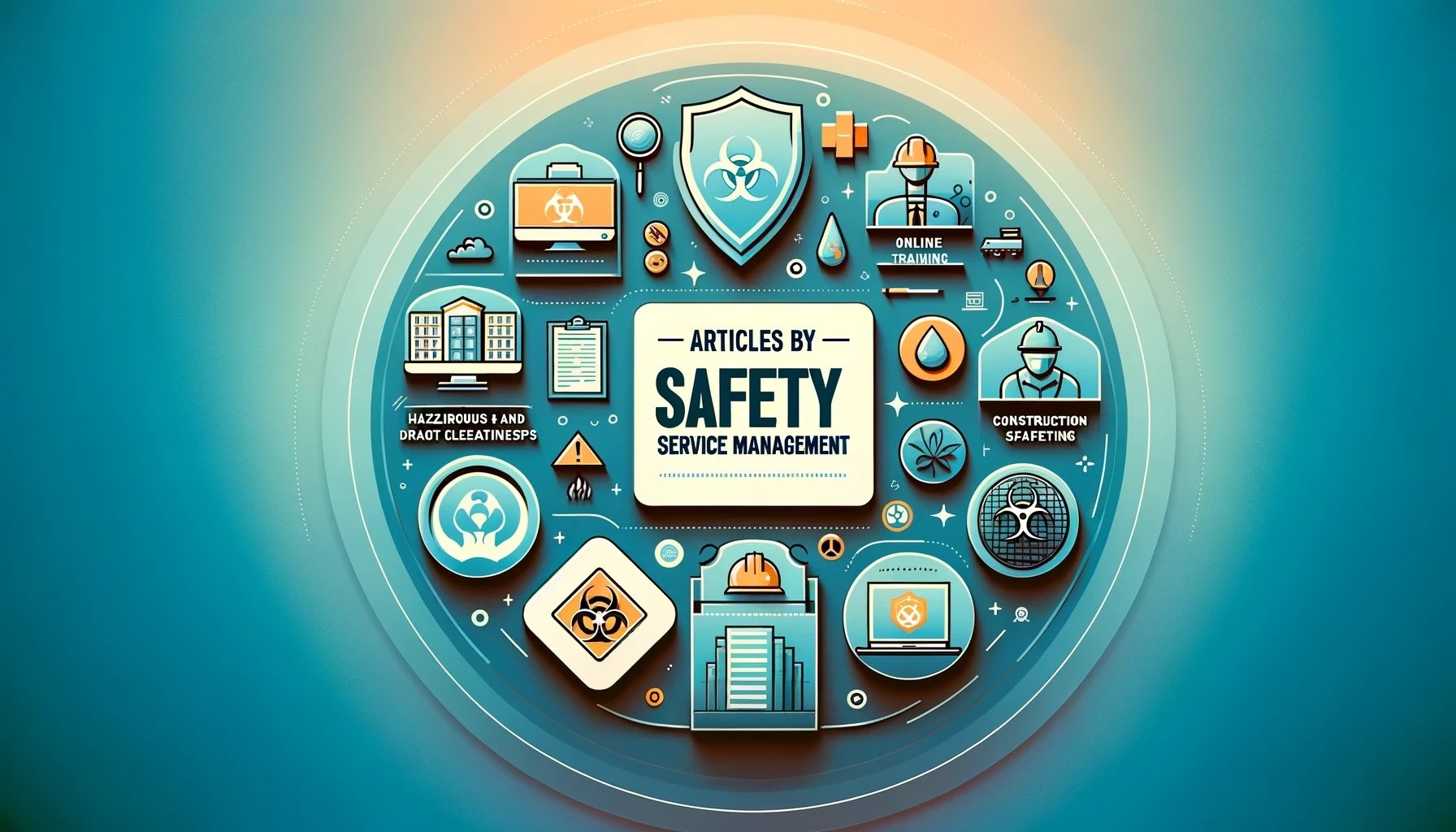
Revolutionizing Illicit Drug Vehicle Testing and Cleaning in Los Angeles
Safety Services Management (SSM), based in Los Angeles, is the only U.S. company using the MX908 handheld mass spectrometer for real-time illicit drug testing in vehicles. This advanced technology, typically used by HAZMAT teams and law enforcement, provides same-day results. SSM aims to reduce contamination risks while offering sustainable solutions through their cutting-edge methods and nationwide expansion goals.
Safety Services Management pioneers cleanup of illicit drug-contaminated vehicles across Southern California
LOS ANGELES (September 11, 2024) — Safety Services Management (SSM), a leading company in the United States specializing in fentanyl cleanup, drug lab cleanup, illicit drug remediation, testing, training, and cleanup consultation, is proud to announce its service for cleaning vehicles contaminated with illicit drugs is now available in Los Angeles.
SSM is currently the only private company in the U.S. to own the MX908 handheld mass spectrometer from 908 Devices Inc., changing the industry with cutting-edge testing technology.
Revolutionizing Recovered Vehicle Decontamination with MX908
The MX908, utilized by specialized hazmat teams and law enforcement personnel, is a high-pressure mass spectrometry device capable of detecting trace amounts of illicit drugs invisible to the naked eye.
This investment allows SSM to provide rapid, in-field analysis, reducing time and cost associated with traditional laboratory-style testing.
"Owning this equipment is a game-changer for insurance companies as they often face the burden of salvaging expensive vehicles,” said Jon Schibsted, CEO of SSM. “We are now often able to clean these recovered vehicles more quickly and effectively, potentially preventing them from being destroyed. Since traditional laboratory testing is often not cost-effective due to the high cost per sample and the time it takes to get results, we can now pinpoint contamination in real-time, allowing us to make necessary adjustments in the field on how to handle each cleaning.”
Addressing the Surge in Vehicle Contamination and Auto Insurance Costs
The rise in stolen vehicles has significantly contributed to the increase in auto insurance premiums, a trend that is further exacerbated by the growing fentanyl crisis.
According to a report from the National Insurance Crime Bureau (NICB), vehicle thefts have surged nationwide, with some regions seeing an increase of over 10% in the past year.
In particular, urban areas and densely populated regions like the District of Columbia and Maryland have experienced drastic rises in thefts, with percentage increases of 64% and 63%, respectively.
This surge in vehicle thefts has led to a dramatic rise in contamination cases, further driving up insurance costs as insurers struggle to manage the risks associated with stolen and contaminated vehicles.
MX908 being used in the field to detect illicit drugs with real time results.
Advanced Chemical Detection for Fentanyl Cleanup
One of the MX908's features is its extensive and continuously updated chemical library, ensuring that the latest and most dangerous chemicals, including fentanyl, are detected in the field during cleanup.
However, using the MX908 is just one key feature – experience plays an equally crucial role.
SSM's expertise includes identifying the risk level in vehicles and properties.
They have developed a proprietary assessment matrix to evaluate risks, which sometimes involves destroying vehicles.
However, this occurs at a much lower rate compared to the rates most insurance companies currently face.
Drawing on experience and insights from industry experts, Schibsted has developed a comprehensive risk assessment protocol.
This protocol is applied to each vehicle and property to accurately determine its suitability for cleaning and the specific level of decontamination required.
In addition to this, SSM has partnered with certified industrial hygienists to assess more challenging properties.
Between Canadian Decon Solutions (CDS) and SSM, over 1,000 vehicles and properties have been successfully cleaned, and we now hope to pass this knowledge along to others throughout Canada and the U.S.
The Need for Regulation in Fentanyl Cleanup
Currently, there is very little to no regulation in most states when it comes to fentanyl cleanup, as the problem continues to grow.
As the fentanyl crisis worsens, more companies are turning a blind eye because they do not want to deal with the issue, often due to the high costs involved.
Others simply do not understand how dangerous this problem has become.
In response, SSM has developed a cost-effective approach to tackle the issue, including comprehensive training, testing, and cleaning.
With their nationwide expansion their experience is helping others as they seek additional partnerships to join in addressing this critical need.
A Sustainable Approach
“The environmental benefits of using the MX908 are substantial,” Schibsted said. “By preventing the wasteful discarding of contaminated vehicles, SSM reduces waste and environmental impact. This innovative approach aligns with SSM's commitment to sustainability and public safety.”
Nationwide Expansion Goals
Currently, SSM can test and clean contaminated vehicles onsite in Southern California, with those out of the area being transported to Southern California for cleaning.
Local service areas include all major cities in Southern California, including Los Angeles, San Diego, Anaheim, Santa Ana, Riverside, Long Beach, Irvine, Glendale, and San Bernardino.
SSM aims to achieve nationwide coverage by adding partners in every major city.
"Companies that join our network will learn our techniques and be part of an effort to tackle the fentanyl crisis when it comes to testing and cleaning with the best technology available," Schibsted said.
Applying Hazmat Expertise to Combat the Fentanyl Crisis
Schibsted, a former hazmat firefighter, has taken his extensive experience and training, gained from working on one of the busiest hazmat rigs in the nation, and applied that knowledge to help combat the fentanyl crisis.
He has focused on educating the public and cleaning both properties and vehicles to ensure they are safe for occupancy.
"One cleanup that really changed my perspective and made a lasting impact was when my team and I conducted cleaning in Northern California, where a house cleaner tragically died after unknowingly cleaning up illicit drugs from a recreational user” Schibsted said. “The young mother left behind two children and had no idea of the danger she was in while cleaning that home. Since that tragic event, I have been dedicated to developing training courses for employees on how to recognize illicit drugs and the steps to take to keep themselves and others safe.”
Innovative Training and Process Development
In addition to developing training programs, the partnership with CDS creates processes that safely restore properties and vehicles.
"When I first entered this field, the standard approach was to discard everything, costing property owners and insurance companies a fortune,” Schibsted said. “After years of rigorous testing using a combination of field and laboratory methods, including the MX908 high-pressure mass spectrometry technology, I am confident that we can restore vehicles and properties to a safe condition, significantly reducing the need to discard items unnecessarily. This not only reduces costs but also prevents environmental harm from excessive waste."
"Learning about something new can often be scary, but once you gain knowledge and understanding, it becomes manageable and far less intimidating. Our goal is to provide that knowledge and support, so together, we can tackle these challenges head-on."
To learn more about joining the SSM network or to get your vehicle or property tested, visit safetyservicesmanagement.com.
About Safety Services Management (SSM)
Safety Services Management (SSM) is a leading company specializing in fentanyl cleanup, drug lab cleanup, illicit drug remediation, testing, training, and cleanup consultation.
SSM also provides confined space standby rescue services across the nation.
With advanced technology and strategic partnerships, SSM is dedicated to ensuring public safety and environmental sustainability.
The Silent Victims of the Opioid Crisis: The Urgent Call for Legislation and Training
We are living in an opioid crisis which has had a devastating impact on the United States. This epidemic has not only effected those struggling with addiction and their loved ones but those tasked with working around this lethal chemical. What is less discussed are the professionals and innocent bystanders who also are being effected by this epidemic. This article aims to shed light on this new and growing hazard.
Opioid Crisis: A Nationwide Catastrophe
We are living in an opioid crisis which has had a devastating impact on the United States. This epidemic has not only effected those struggling with addiction as well as their loved ones, but also effects those tasked with working around these lethal chemicals. Not often discussed are the professionals and innocent bystanders who have been hurt or killed. This article aims to shed light on this new growing hazard.
Lethal doses of Fentanyl and Carfentanil found inside a contaminated property.
A Ripple Effect on Society
Use of opioids such as fentanyl, can devastate more than just the individual user. Not only do these potent drugs wreak havoc on the user, but they also contaminate the places where they are manufactured, stored, or even simply used. This creates an invisible but very real threat to anyone who might unknowingly come into contact with these environments.
As someone who has been working in this field for several years, I believe the tragic instances of secondary exposure happen more frequently than we realize, largely because the dead can't speak for themselves. Consider the heart-wrenching stories we've heard recently: In New York, a two-year-old lost her life after being exposed to fentanyl at her nursery, and three young classmates were also exposed but thankfully survived. In another incident, a 19-month-old died from fentanyl exposure while staying in an Airbnb.
Red Tagged Property Due to Fentanyl Contamination
Closer to home in Los Angeles, two construction workers lost their lives while performing maintenance work inside an apartment. While it was presumed they died from second-hand accidental exposure to fentanyl, some speculation arose that they may have consumed the drugs intentionally. Too frequently, the narrative skews toward a more easily digestible story to avoid wrongful death lawsuits, suggesting that adults found in these situations must have willingly consumed these dangerous substances. I have witnessed firsthand that this version of events is both simpler to convey and more cost-effective for the parties involved when such tragedies occur.
But in the case of young children, there's no room for speculation; the fact is undeniably horrifying. And that's why it's crucial to recognize that people—both young and old—are losing their lives in situations where they have not willingly exposed themselves to these lethal substances. These innocent bystanders become silent victims of an epidemic they didn't choose to be part of. This should compel us to fully investigate the circumstances surrounding these deaths and to adapt our public safety measures to protect the most vulnerable among us.
Protecting All Workers on the Frontline
It's a disheartening reality that, while first responders are often provided with specialized training to handle these types of hazardous situations, many non-sworn workers are left vulnerable due to a lack of similar resources. Firefighters, EMTs, and police officers are trained to recognize and mitigate the risks of fentanyl and other hazardous substances. They are equipped with personal protective equipment (PPE) and educated on how to proceed safely in contaminated environments. However, the same cannot be said for numerous other individuals who work in high-risk environments, yet lack the formal training and equipment to protect themselves adequately.
Before diving into our urgent call for training, it's important to acknowledge the lives already tragically affected by this crisis. One particularly heartbreaking story that motivated me to take action was that of a house cleaner who died after cleaning a home where a recreational drug user had fatality overdosed. She left behind two young children, their lives forever altered by this devastating loss. She had simply been doing her job, unaware of the invisible dangers that lurked within the contaminated environment she was working in. Her story is a grim testament to the urgent need for widespread education and awareness.Every member on my team was personally affected and saddened by this tragic loss of life.
The team packed up and moved on to the next cleanup. This time they were tasked with cleaning a hotel room where a recreational drug user had recently succumbed to fentanyl. While my team was in the middle of the cleanup, EMTs rushed into a room adjacent to where they were working to respond to another overdose, likely due to fentanyl.
As my team watched the whole event unfold, they witnessed a hotel maid walk into that very room, outfitted only in her regular uniform and equipped with everyday cleaning supplies. She was oblivious to the invisible but potentially deadly hazards that permeated the room and she began her routine cleaning.
She gathered the towels and sheets that had been in close contact with the overdose victim, clutching them tightly against her chest in order to gather as many linens as she could carry. She then proceeded to dump these potentially contaminated linens into her laundry cart, stationed outside the room. As the sheets landed at the bottom of the cart, a puff of air visibly billowed upwards toward her face.
Members from my team immediately intervened, halting her actions to educate her about the life-threatening risks of secondary fentanyl exposure. We explained how easily fentanyl particles could be inhaled, especially in powder form, posing a severe risk to her. Her expression morphed from one of confusion to one of shocked realization as the gravity of the situation fully dawned on her.
These back-to-back incidents were my motivation to educate non-sworn personnel on the hazards of fentanyl. Over the following year, I collaborated with a variety of experts and developed a comprehensive fentanyl awareness training program aimed at vulnerable workers in sectors like hotel management, waste disposal, and auto body shops repairing stolen vehicles in which illicit drugs have been discovered. This was not just a moral obligation but a necessity, as I came to the realization that these groups of workers are completely unaware of the lethal hazards to which they may be exposed.
Legal and Ethical Considerations
California is at the forefront of tackling fentanyl-contaminated property cleanup through its Methamphetamine or Fentanyl Contaminated Property Cleanup Act, but most states lag in providing comprehensive regulations. As discussed, the drug is alarmingly potent and poses significant risks to users and bystanders alike. While cleanup costs can be exorbitant, ranging from $5,000 to $50,000 for a small site, there is still a lack of detailed federal and state guidelines on decontamination procedures. Most existing policies focus on protecting first responders but overlook other workers who may be at risk. The pressing nature of the fentanyl crisis calls for immediate, comprehensive guidelines for property cleanup to safeguard public health. Click the following for Summary of State Laws regarding fentanyl cleanups, state by state.
Legislation and Financial Relief
California's existing laws can serve as a blueprint for other states. States should also specify what constitutes a "safe level" of contamination. In California, for instance, the guideline is that levels should be "non-detectable," but this leaves room for interpretation regarding the sensitivity of the tests used to measure contamination. Therefore, it is crucial that legislation clearly defines what is considered a safe level prior to reoccupying a room.
There is a growing consensus that legislation needs to account for varying degrees of contamination and public risk. For example, a site where an individual overdoses from an intact pill is a significantly less of a hazard compared to an area where fentanyl powder is dispersed. Consequently, laws should be flexible enough to cater to these variances, prescribing different levels of required cleanup based on the specific conditions.
From my experience, there's also an urgent need for mechanisms that provide financial relief to property owners caught in these situations. Often, they bear considerable financial burdens for cleanup activities, even when they had no prior awareness of illicit drug use occurring on their property. Many property owners with homeowners' insurance are shocked to learn not only the high costs of a professional cleanup but also that their insurance policies frequently do not cover such events. These financial pressures often lead property owners to make risky choices. All too often, I encounter property owners who, lacking the necessary funds for professional cleanup, are faced with the dilemma of either tapping into their life savings or attempting the hazardous cleanup themselves. These decisions can result in the site not being safely cleaned and properly tested for safe habitation. Therefore, it is critical to establish financial relief options that help ensure effective and timely cleanups, while safeguarding both property owners and the wider community.
Michael A. Polkabla's Case Study on Cleanup and Assessments
In his groundbreaking case study, "Establishing Standards for the Assessment and Decontamination Cleanup of Opioid-Contaminated Properties," Michael A. Polkabla provides invaluable insights into the complexities of opioid contamination. His research highlights the pressing need for standardized approaches, not only for the benefit of first responders but also for other workers who might be exposed to such hazards. The case study underscores the complexity required to properly clean a contaminated property, an issue that aligns closely with the objectives of this article. For a comprehensive understanding of the assessment and decontamination of opioid-contaminated properties, Polkabla's case study is a must-read.
Conclusion
The far-reaching effects of the opioid crisis necessitate a concerted effort from all sectors. Inspired by the invaluable research of experts like Michael A. Polkabla, this article aims to contribute to the ongoing dialogue. We need comprehensive guidelines and legislation to ensure the safety of all those potentially affected by the opioid epidemic. Whether it's first responders, property owners, maid cleaning services, or body shop workers, a multi-pronged approach is critical in creating a safer environment for everyone. Landlords renting their properties should also review their homeowners' policies to determine if they are covered for fentanyl cleanups. Additionally, there should be a push to provide fentanyl awareness training to non-sworn companies and their employees on the hazards of secondhand fentanyl exposure, as they are often the ones who inadvertently find themselves at risk. Together, we can create a roadmap for a more secure and informed community.
About the Writer:
Jon Schibsted is a veteran Safety Professional with a distinguished career spanning over 15 years as a hazmat specialist. His expertise extends to specialized training in weapons of mass destruction, including chemical, blister, radiation, and nerve agents. Certified as an Emergency Medical Technician (EMT), Jon owns Safety Services Management, a busieness specializing in fentanyl contamination cleanup and comprehensive training programs to safeguard staff from accidental fentanyl exposure. His extensive experience encompasses roles as a Health and Safety Manager in the private sector and as a former Firefighter and Hazmat Specialist with the Los Angeles Fire Department. Jon's depth of expertise serves as a robust foundation for ensuring the highest levels of safety across a range of environments.
12-year-old Boy Dies After Cleaning Uncle's Drug Paraphernalia
In a somber event from March 2022 in Blackwood, New Jersey, a 12-year-old boy tragically lost his life due to a suspected fentanyl overdose. Troy Nokes, 35 who is the boys uncle is in custody for allegations related to the boy's exposure to fentanyl.
According to the Camden County Prosecutor’s Office and the Gloucester Township Police, Nokes faces charges including aggravated manslaughter. Fentanyl intoxication was identified as the cause by the Philadelphia Medical Examiner’s Office.
In a somber event from March 2022 in Blackwood, New Jersey, a 12-year-old boy tragically lost his life due to a suspected fentanyl overdose. Troy Nokes, 35 who is the boys uncle is in custody for allegations related to the boy's exposure to fentanyl.
According to the Camden County Prosecutor’s Office and the Gloucester Township Police, Nokes faces charges including aggravated manslaughter. The 12 year old boy was found unresponsive on a school bus and passed away shortly after. Fentanyl intoxication was identified as the cause by the Philadelphia Medical Examiner’s Office.
Investigators revealed that the young boy may have come into contact with fentanyl under Nokes' direction. Joanna Johnson, Nokes' partner, also faces charges.
The heartbroken grandmother of the deceased is grappling with her grandson's untimely passing and the subsequent arrest of a family member. Both Nokes and Johnson are awaiting legal proceedings at the Camden County Correctional Facility. Authorities encourage those with relevant information to reach out, even anonymously, at ccpotips@ccprosecutor.org.
Fentanyl - The Untold Story
While deaths of fentanyl users increasingly make the headline news, rarely if ever are there the untold stories of those responsible for decontaminating a property to make it fully safe and habitable.
The Ramifications of Fentanyl Beyond the Death of a User
In early April, the Orange County District Attorney’s Office in Southern California, filed felony charges against two drug dealers in the largest bust in the county in 16 years. On March 17, Buena Vista police officers stopped the pair outside a home as they were driving away in a minivan. It was packed with 822 pounds of meth, 89.7 pounds of cocaine, and the biggest killer of them all, 20.5 pounds of illicit fentanyl pills destined to be sold as counterfeit opioids or likely crushed and cut into cocaine, meth, or heroine.
The District Attorney estimated that given the lethal dose of fentanyl—a minuscule 2 milligrams—the haul had the potential to kill 4.7 million people. “Fentanyl is cheap, is easy to get and it is killing our children, our coworkers and tens of thousands of innocent Americans,” says County District Attorney Todd Spitzer in a press release on the matter. He urges caution: “Millions of unsuspecting people have the grim reaper looking over their shoulder, and they have no idea how close they actually are to dying from taking a single pill.”
An additional concern when dealing with fentanyl is the accidental exposure by an innocent bystander. This is rare but does occur even though groups who are pro-legalizing illicit drugs will say otherwise. The reality is, illicit fentanyl like the analog carfentanil is approximately 100 times more potent than pharmaceutical grade fentanyl and 10,000 times more potent than morphine. Individuals who have not built up a tolerance and accidentally inhales or ingests this illicit drug can be fatal.
While deaths of fentanyl users increasingly make the headline news, rarely if ever are there the untold stories of those responsible for decontaminating a property to make it fully safe and habitable.
A Dunk in the Deep End
In 2020, Greg Gleeson, who co-owns 200 units in Southern California with his brother, gets disturbing news from their property manager. He calls to inform Gleeson that the San Bernardino County Fire Department red tagged one of their rental units where two people overdosed and a third victim was in the hospital.
Gleeson rushes to the scene and is shocked by what he finds.
“There were people in hazmat suits,” he says. “I thought, was somebody there using nuclear material and making bombs or something?”
In essence his rental unit morphed into a hazardous waste site.
“The police told me that these guys were cutting illicit fentanyl pills in the apartment,“ he says. “They probably inhaled the fentanyl powder, and it killed them. That’s when I discovered that a small amount of fentanyl like a grain of salt could be lethal.”
That was only the beginning of Gleeson’s nightmare, or, as he describes it, his “dunk in the deep end.” The property was impounded and red tagged by the fire department. It was determined that it needed a complete remediation by a professional crew before the unit could be deemed safe and habitable.
Northern California Twin Deaths
On June 7, 2019, a victim of fentanyl poisoning is found seated in front of a TV with the remote still in-hand in his 2,800-square-foot residence in Northern California. The potent dose of the illicit opioid hit this victim so fast he had no time to call for help as his life came to a tragic end.
Local police and the Coroner’s Office examine the death site. After a brief inspection, they conclude it was a run-of-the-mill overdose or cardiac arrest. No crime was involved. Case closed. The autopsy was minimal, and the lab tests were sent to a testing site in Pennsylvania, but the results were not readily available.
A week after his death, the case is reopened after an unsuspecting house cleaner loses her life while vacuuming the site where he died. It was later discovered that fentanyl was the source of the original overdose as well as the cause of death of the house cleaner.
After the home is red tagged by local authorities, testing begins by a Certified Industrial Hygienist which shows that traces of fentanyl is found throughout the home.
Two weeks after the house cleaner’s death, lawsuits against various parties are filed. A trust company, which represents the owner of the property, hires lawyer Mac Prout from the Borton Petrini law firm.
“I’ve been involved in cases for more than four decades, but I’ve never encountered one as tragic as this,” says Prout, explaining that lawsuits are still in litigation. “It has affected the recreational drug user’s entire family as well as the deceased house cleaner, whose two young girls lost their mother. It’s an unadulterated case of the beast of addiction. Top to bottom, this was incredibly senseless.”
The Untold Story
These narratives are only two examples of thousands of casualties from the ruinous fentanyl epidemic sweeping our nation.
The heart-wrenching stories of how heroin, cocaine and opioid addiction take lives and devastate those in the wake of overdoses are all too familiar. But as shown in both these California communities, today users and law enforcement across the country are grappling with an unprecedented crisis fueled by a lesser known but even more lethal substance: synthetic fentanyl. Largely manufactured in Mexican labs from chemicals imported from China, fentanyl is smuggled across the U.S. border and sold on the black market for enormous profit.
While overdoses make headline news, what’s blatantly overlooked and unreported is the consequences of overdoses do not end merely with a user’s death. The untold story: When a person has engaged in illicit fentanyl use the site may have turned into a hazardous waste site. Inhaling or ingesting a small amount of the drug can be deadly. The ramifications impact all who come in contact with the property—from first responders to those tasked with cleaning up, and at worse, those who are not aware of the hazard such as family members or even a hotel guest enjoying a relaxing vacation.
Federal Drug Enforcement Weighs In
In September 2021, the Drug Enforcement Administration weighed in on the fentanyl epidemic with a Public Safety Alert. “The United States is facing an unprecedented crisis of overdose deaths fueled by illegally manufactured fentanyl and methamphetamine,” says Anne Milgram, DEA administrator. “Counterfeit pills that contain these dangerous and extremely addictive drugs are more lethal and more accessible than ever before.”
At that point in time, more than 9.5 million counterfeit pills were seized in 2021—more than the past two years combined—with a dramatic rise in the pills packed with the lethal dose of 2 milligrams of fentanyl, according to the DEA. Two out of every five pills with fentanyl contain a potentially deadly dose—small enough to fit on the tip of a pencil.
Up to 50 times more powerful than heroin, pharmaceutical fentanyl began with noble intentions. It was first developed in 1959 by Paul Janssen, a Belgian doctor and pharmacologist, as an intravenous pain treatment for cancer patients. It was certified for palliative care by the FDA in 1968.
DEA Museum Presents: “American Crisis:Fentanyl & Fake Pills”
Based on a recent analysis of Centers for Disease Control data, fentanyl has become the predominant killer for Americans ages 18 to 45. In the past two years, deaths from fentanyl have considerably exceeded deaths from COVID-19 for this age group. Recently, the United States Centers for Disease Control and Prevention reported more than 93,000 people died of a drug overdose in the U.S. in 2020, an increase of 30 percent from the previous year. It blames the rise on the increased use of fentanyl sold on the streets. In an updated report, the agency said that more than 100,000 had died in a 12-month period ending in April, mostly attributed to fentanyl use. Drug researchers say that that number will rise every month.
Eager to make a greater profit, dealers lace commonly known drugs such as heroin and cocaine with fentanyl. This often results in a lethal cocktail for unsuspecting buyers. Those who fall prey include recreational users seeking a cheap and powerful euphoric high and addicts desperately looking for a less expensive alternative to legal, FDA-approved fentanyl.
The FDA reports that there are thousands of illegal websites that peddle counterfeit drugs (Snapchat has been singled out for its ease in selling suspect online drugs). It’s a national disaster of epic proportion that spans all socio-economic backgrounds and ages and increasingly infiltrates all regions of the country.
In October 2021, the DEA announced at a press conference that within the previous eight weeks it arrested 810 traffickers in the criminal drug distribution networks across the U.S.
Deputy Attorney General Lisa O. Monaco says, “The pervasiveness of these illicit drugs, and the fatal overdoses that too often result, is a problem that cuts across America from small towns to big cities and everything in between.”
“The fentanyl-laced fake pills seized by the DEA could potentially kill more than 700,000 Americans,” says Anne Milgram, administrator of the U.S. Drug Enforcement Administration. At the press conference she added, “I urge the American public today to talk to their loved ones about the threats and dangers of fake pills and the simple fact that one pill can kill.”
Today, many investigators point to the onset of Covid-19 pandemic when people increasingly bought drugs through the Darknet which had already become a lucrative drug-selling underground business. Much of the drug sales took place on social media platforms. Most of the fake pills were laced with fentanyl.
In 2021, the DEA helped to launch the massive 10-month Operation Dark HunTor that traced drug vendors running laboratories at home. They were creating illicit pills laced with fentanyl. In the U.S., the operation alone seized more than 200,000 counterfeit pills.
Hidden Dangers of a Fentanyl Cleanup
Cleaning up fentanyl at a contaminated property is a daunting challenge riddled with complex issues. Making a place safe again entails adhering to strict safety protocols, including testing, hiring a certified industrial hygienist and a qualified hazmat trained cleanup crew.
The most important factor is to hire a crew of professionals to make certain that the remediation is done safely. That’s the main challenge companies in the remediation business face.
In 2003, Joe Mazzuca and his wife Julie founded Meth Lab Cleanup Company with the intent to primarily clean up contaminated properties that were used as labs for manufacturing methamphetamine “meth” for the black market. (It’s estimated that there are still 2.5 million meth lab sites in the U.S.)
Since then, their Florida-based company has become the leader in cleaning thousands of sites contaminated by meth. In recent years, Mazzuca has seen a big shift in the illicit drug market.
“In the last 18 months, we’ve seen a huge trend of overdoses of meth users who were using drugs cut with fentanyl,” he says. “It’s a hazardous material. On most of the sites we service, there’s been a rise in deaths just from handling the drugs. It doesn’t take much to overdose. We test for both meth and fentanyl to make sure a space can safely be inhabited.”
Mazzura’s clean-up reputation has led him to train hazmat professionals around the world. Jon Schibsted, a former firefighter for Los Angeles, received extensive training from Mazzura to handle clandestine lab cleanups.
Schibsted founded Safety Services Management, LLC (SSM), a Southern California-based company that specializes in meth and fentanyl cleanups. His team was hired for both the San Bernardino and Northern California properties which we will later review.
Often times porous items need to be naturalized and then discarded to ensure hidden traces of fentanyl are removed.
“My primary objective is to educate property owners and inform them about the dangers of a site contaminated with fentanyl and how important it is to have it cleaned properly,” he says. “If property owners are blindsided by a fentanyl death and do not take the proper steps, others could be tragically exposed, rental incomes could be wiped out for months and lead them wide open to possible lawsuits.”
Schibsted notes that because fentanyl is such a cheap drug for mixing with other narcotics, its manufacturing reach is widespread. “This is the real danger,” he says. “It’s occurring in hotel rooms, apartments, houses, garages and storage facilities which can cause widespread contamination that the general population can be exposed to.”
When a local public health unit responds to a fentanyl fatality and determines that the property needs to be red tagged due to fentanyl contamination, all traces of fentanyl must be removed. This begins the nightmare for many property owners. Some agencies such as the San Bernardino County Fire Department give the owner a packet that includes the cleanup process and information about contractors approved to handle this specialized remediation. But oftentimes, the property owners are left on their own to find the appropriate resources.
“The cost is huge,” says Dwane Pianalto, a Southern California Registered Environmental Health Specialist (R.E.H.S). “Such a substantial cost for a hotel, for example, means loss of rental income. If a site is red tagged, the law states no further occupation is allowed until the remediation is completed. The whole process could easily take up to 90 or more days.”
Once a site has been red tagged due to fentanyl, a Preliminary Site Assessment is created by a trained professional such as a certified industrial hygienist. The hygienist takes samples of the site and provides recommendations on cleaning. “We prefer to work directly with the hygienist at the beginning of the process to ensure they sample the site to paint a clearer picture of what needs to be cleaned,” says Schibsted. “If it isn’t done correctly, it can lead to a much higher cleanup cost.”
SSM often uses certified industrial hygienist Joe McCaffrey in Southern California. “I started working on methamphetamine cases, but fentanyl cases are increasing,” he says. “Various surfaces inside the residence are sampled for fentanyl contaminants. Sampling usually includes walls, floors, furniture, appliances, HVAC systems and areas that appear to have been impacted by pill presses, smoking or drug cooking activities.” Those samples are then analyzed by an accredited lab that provides the results of contamination.
When fentanyl is in powder form, McCaffrey says, “I advise neutralizing the drug with a solution such as Decon7 or Dahlgen, an oxidation-based cleaner, then follow up by using a vacuum with HEPA filters to remove all the small particles. Then we test again to make sure the property is safe to reoccupy.”
Nightmare Remediation No. 1: San Bernardino
Crews preparing to make entry into Gleeson’s rental property.
Greg Gleeson calls his ordeal a nightmare. He had to move people out of adjoining units, which meant a hit in income for rentals. He then had issues with his property insurance company that rarely covers damages from drug abuse.
Gleeson hired Schibsted’s company to clean up the unit. “There were some other remediation companies, but I went with Jon’s company, Safety Services Management,” he says. “As a former firefighter, he knew exactly what the fire department required. They got the job done, but then there were delays on getting the unit remodeled to rent again. The whole process took over a year to complete. All said, it cost us a small fortune.”
As for his recommendations to other property owners, Gleeson says, “So much fentanyl is coming through Mexico, so Southern California is being hit hard. More is coming in, so be prepared. Check your insurance, have a rolodex of cleaning crews and be ready to hire one to fix the whole mess.”
Nightmare Remediation No. 2: Northern California
After the second death at the Northern California property, inspectors found an abundance of fentanyl residue throughout the house.
Built-in cabinets with darkened glass windows were discovered in the wall in the television room. Drawers in other rooms revealed more visible evidence of contamination.
Due to the tragic loss of two individuals over a 7-day period, the home was red tagged to only allow hazmat trained personnel to enter the property to ensure this tragedy doesn’t repeat.
This particular property was red tagged for a period of over two and a half years from the horrible events that started in June 2019. The lack of clear regulations when dealing with fentanyl contaminations has been a key contributing factor creating confusion on how to deal with these types of properties which can turn into a litigation nightmare.
Decontamination Process
Crews vitals are taken before, during and after they make entry into a fentanyl contaminated property.
“Safety is our highest priority,” Schibsted says. “We not only train our employees on how to remediate the site but also plan for the worst-case scenario. A worker can go down in a hazardous environment in seconds. I train my crew on how to rapidly extract an unconscious worker from a hazardous environment and how to provide life saving measures.”
At every step during the initial cleaning phase, the work is slow and dangerous.
Crews use decontamination solution to neutralize illicit fentanyl.
“We attack and neutralize the area known to have fentanyl which is often in a powder form,” Schibsted says. “When you first make entry into the site, it’s essential to avoid stirring up particles which could contaminate the workers and their equipment. The goal is to isolate the fentanyl to keep it from spreading, then begin the cleanup.”
Once the known contaminated areas are neutralized, SSM applies a low-pressure sprayer to spray areas of concern with a decontamination solution. Most porous items are discarded, and the valuable non-porous items are cleaned. Removing the decontamination solution is done by using a pressure nozzle and extractor to rinse the ceilings, walls and floors. Once all the surfaces are dry, the entire site is then vacuumed with a commercial grade HEPA vacuum. This process at may at times need to be repeated before all traces are removed.
“To ensure the place is safe to reoccupy, we run multiple tests which detect trace levels of fentanyl,” Schibsted says. “Depending on the level of original contamination, we will then have an industrial hygienist return and review our cleaning process and take post cleaning lab samples.”
Decontamination Challenges
The science is there, but state legislations have been notoriously slow to respond to the epidemic. Currently, California, is the only state that has established cleaning standards with a fentanyl detection level. It’s a start but nowhere near the 2007 federal Methamphetamine Remediation Research Act that established guidelines for meth lab cleanup in response to the addiction problem. For the most part, states have not addressed the fentanyl cleanup problem—even though fentanyl poses one of the greatest threats to public health.
In a more recent report in 2021, the EPA published a 64-page booklet “Voluntary Guidelines for Methamphetamine and Fentanyl Laboratory Cleanup.” These are “voluntary guidelines,” published by a governing agency that specializes in protecting the environment, not humans. The EPA got the ball rolling, but it’s disappointing that agencies that focus on protecting human health have not stepped up like the EPA to reduce the chance of a secondary exposure.
As might be gathered, fentanyl cleanup can be enormously expensive which could potentially lead to cutting corners in full remediation. In St. Louis, Missouri, a rental car was being used to transfer drugs. One bag containing fentanyl ripped open in the trunk. The company called a decontamination company which quoted $30,000 to complete the cleanup. Because there were no cleanup requirements by law in Missouri, the rental car company cleaned the car itself. The price was less costly but easily could have put the workers and future renters in grave danger at the cost of rental car profits.
With a policy vacuum on the safety dangers of illicit fentanyl, the public’s safety is at risk for all people in all states. The owners of properties could be sued if a future resident succumbed to a fentanyl exposure that wasn’t properly remediated.
Crews and their equipment are decontaminated as they exit the property to eliminate accidental spreading of illicit fentanyl.
In August 2021, eight people overdosed on fentanyl cut into cocaine in small North Fork towns in the seaside East End of Long Island 100 miles away from New York City. Six died, two were hospitalized. They were all recreational users. In a New York Times news report, Timothy D. Sims, the district attorney of Suffolk County where 3,000 people have died of overdoses in the last decade, said that there had been pressures of shortages on the market which affected drug dealers. “All the while we have seen demands skyrocketing from users because of the impact the pandemic has had on them.”
The North Fork headlines were of course atrocious, but again nothing was written about the remediation of properties contaminated by fentanyl. Two dealers in Suffolk County were arrested—Lavain Creighton from Greenport, Justin Smith from Smithtown. They will be put on trial for their responsibility of these deaths and could well face a manslaughter conviction but there has been no news on the cleanup work by the narcotics division not only where the dealing occurred but also in the towns where deaths took place.
Several calls to the Suffolk County officials were not returned. Too busy? Or were those in charge unwilling to speak on the record about the issue of cleanup? Like more than twenty states in the nation, New York doesn’t regulate illicit drug cleanups. So, it’s a jump ball with the unsuspecting public most at risk from traces of fentanyl’s deadly pollution.
The pandemic could well have taken a detrimental role in the social climate that triggered the rise of using poisoned pills. Isolation, depression, fear can all play into a drug addiction.
Schibsted concludes, “My hope is that we can get the word out about how dangerous illicit fentanyl is to not only the user, but everyone that may accidentally come into contact with this deadly drug.”
Fentanyl Epidemic in Teens
Deaths associated with the illicit flow of fentanyl into American culture is often deemed to be an adult problem. In cities, addicts gathered in small clusters—like The Tenderloin district of San Francisco—will jump at any drug that comes their way. In the suburbs, people craving an exciting recreational high are at full risk because they don’t know what’s in a drug that has been purchased. Online dealers are notorious for flooding the market with fentanyl-laced powders and pills. These cases are proliferating in recent years, though too often they fall out of consciousness as an issue that is irrelevant. But what about the kids?
Flow of Fentanyl into America
Deaths associated with the illicit flow of fentanyl into American culture is often deemed to be an adult problem. In cities, addicts gathered in small clusters—like The Tenderloin district of San Francisco—will jump at any drug that comes their way. In the suburbs, people craving an exciting recreational high are at full risk because they don’t know what’s in a drug that has been purchased. Online dealers are notorious for flooding the market with fentanyl-laced powders and pills. These cases are proliferating in recent years, though too often they fall out of consciousness as an issue that is irrelevant. But what about the kids?
What’s most alarming are the new stories about teenage deaths because of fentanyl use. They are being reported recently in wider visibility. A troubling story comes from San Jose where in November 2020 a 12-year-old girl bought an “M-30” pill that she thought was a dose of the euphoric Percocet opioid. She was with two other teenage girls who were taking a video while their friend crushed the pill and snorted the powder. She then passed out because of a fentanyl overdose. Her friends took her to a regional medical center where she was declared dead. She became the youngest person to die in Santa Clara County that year.
On the day she died, the San Jose Police Department arrested a 16-year-old teenager who sold the pill to her. They said they traced the illegal dealing to his Google Photos account that showed screenshots of public service warnings over fentanyl overdoses. In a statement, District Attorney Jeff Rosen said, “After thousands of deaths, everyone should know that fentanyl is a deadly poison.”
While executing a search warrant, police officers found 100 bags of fentanyl in the bedroom of the Hartford, Connecticut, teenager who died of an overdose in school. - Hartford Public Schools
In 2022, the county announced that the dealer was facing murder charges. It’s the second such case in the county where a 14-year-old Concord high school student died after ingesting an M-30 pill. In the area, earlier an 18-year-old man died from fentanyl after buying a pill over Snapchat. That dealer was also charged with murder.
Three thousand miles away, a horrendous case of fentanyl abuse took place in Connecticut at the Sports and Medical Science Academy magnet school where a 13-year-old student who was dealing bags of fentanyl powder collapsed in the gymnasium and died two days later on January 13, 2022. Two other students at the school were sickened after exposure but recovered in an area hospital. Investigators determined that the deceased had taken the drugs to school. Authorities uncovered 60 bags that were linked to the 13-year-old. The bags were stashed in two classrooms and the gym. The school was evacuated and locked down after the incident to give way to an extensive cleanup. The school reopened to students on January 19.
The police executed a search warrant for the seventh grader’s home where they uncovered another 100 bags in his bedroom. “This fentanyl was packaged in the same manner as the bags located at the school, had the same identifying stamp and tested at an even higher purity level [60%],” Hartford police said. “We can confidently say that the fentanyl that caused the overdose was the same fentanyl that was located in the juvenile’s bedroom.”
The Hartford police has yet to determine who was the dealer of the drugs to the youngster. It is still in the midst of conducting additional testing, including fingerprint and DNA analysis.
The most disturbing takeaway is that the fentanyl crisis has taken its deadly toll on all classes and all ages.
—Dan Ouellette
Methamphetamine Remediation
Nearly 20 years ago, Joe Mazzuca and his wife Julie founded Meth Lab Cleanup Company with the intent to clean up contaminated properties that were used as labs for manufacturing methamphetamine for the black market. In a conversation last fall with Mazzuca, he estimated that there are 2.5 million clandestine meth lab sites in the U.S.
Meth Lab Cleanup
Nearly 20 years ago, Joe Mazzuca and his wife Julie founded Meth Lab Cleanup Company with the intent to clean up contaminated properties that were used as labs for manufacturing methamphetamine for the black market. In a conversation last fall with Mazzuca, he estimated that there are 2.5 million clandestine meth lab sites in the U.S.
“I have crews all over the country,” he says. “Over the last 20 years we have cleaned more than 8,000 meth lab sites that are residential, public and commercial. Meth is a hazardous chemical, so we decontaminate a site to get rid of the toxicity.”
Meth Houses: This is what a house looks like when it’s used as a meth lab
In 2007 at the height of the meth addiction crisis, the federal government passed the Methamphetamine Remediation Act that directed the Environmental Protection Agency to establish guidelines for meth lab cleanup to help states address the problem. As of recently, only 25 states have made laws to regulate the cleanups. For those that have drawn up legislation, the remediation of meth residue on a property (including a house, apartment, shed) is stringent, including hiring a cleanup contractor. (Other states, including New York, have not passed drug-lab decontamination laws.)
Meth contamination comes from smoking or cooking the addictive drug. For a smoker, 67 percent of the drug is inhaled while 33 percent lingers in the environment where it easily becomes absorbed by walls, floors, carpets, countertops, drapes and clothing—all considered hazardous waste. Mazzuca cites examples of meth-infected properties that were not decontaminated and were then occupied by unsuspecting home owners who fell ill because of the lingering toxics.
According to the United States Drug Enforcement Administration, meth and increasingly fentanyl are the top two contributors to overdose. While each illicit drug is dangerous, when the two are combined, it can be lethal. Meth is a powerful stimulant while fentanyl is a depressant. Taken together it’s called speedballing with a powerful high and then a dangerous crash. Mazzuca recognizes this as a big shift in the lethal drug market.
“In the last 18 months, we’ve seen a huge trend of overdoses of meth users who were using drugs cut with fentanyl,” he says. “It’s an extremely hazardous chemical. On most of the sites we service, there’s been a rise in deaths just from handling the drugs. It doesn’t take much to OD. We test for both meth and fentanyl to make sure a space can safely be inhabited.”
To expand his operation, Mazzuca offers in-depth online courses that train how to test the site, how to don and doff hazmat suits and how to handle clandestine lab cleanups.
Multiple Parents Arrested for Fentanyl Death's
Illicit fentanyl deaths continue to make the news almost daily with nation-wide cases involving recreational users and opioid addicts. The fine line between getting high and bottoming out in death is incredibly narrow. Fentanyl’s lethality amounts to two milligrams—small enough to fit on the tip of a sharpened pencil. That makes a contaminated space of a victim’s use or even as a cutting lab a monumental cleaning challenge for specialized crews.
Fentanyl Victims: Infant and Toddler
Illicit fentanyl deaths continue to make the news almost daily with nation-wide cases involving recreational users and opioid addicts. The fine line between getting high and bottoming out in death is incredibly narrow. Fentanyl’s lethality amounts to two milligrams—small enough to fit on the tip of a sharpened pencil. That makes a contaminated space of a victim’s use or even as a cutting lab a monumental cleaning challenge for specialized crews.
While the vast majority of fentanyl overdoses occur with adults, there is an alarming trend of young children—the most innocent and vulnerable—falling prey to their parents’ foolishness. In recent cases, an infant died as a result of her mother’s drug use in Mississippi while a 15-month-old toddler died as the result of his two parents’ drug-infested home life styles in Riverside County in Southern California.
In Oxford, Mississippi, the details are sketchy, but the story is horrendous. Ebonee White, 31, called police on September 15, 2021, when her baby daughter had stopped breathing. The police sent an ambulance that transported her to a nearby hospital. She was pronounced dead on arrival. An autopsy by the Mississippi Medical Examiner’s Office several weeks later revealed that the infant had died of fentanyl toxicity.
White was arrested on December 2 and charged with manslaughter—culpable negligence. It’s unclear if the baby had accidentally ingested powder or inhaled a tiny spec of the drug—or even if her mom had been smoking fentanyl. What is clear is that the Oxford Police Department after it further investigated the incident ordered her to be held on a $100,000 bond.
In September 2020 in Riverside County, a couple deep into counterfeit drug use were suspected of murdering their 15-month-old son. He mysteriously stopped breathing in the family’s dilapidated and filthy trailer. His mother, Sandy Acuna, told authorities he had climbed out of his crib and swallowed a white, circular pain pill. She said it was from a prescribed drug that she was using from a difficult birth of her 4-month-old daughter. However, authorities investigated this claim and found no prescriptions had been written for her.
What was uncovered was alarming. The investigators found photos on Acuna’s cell phone of pills that were consistent with the type of illicit drugs on the black market that were laced with fentanyl. Her blood was tested which revealed that she had fentanyl in her system. Her husband, Adler Metcalf, likewise had fentanyl in his blood system as well as marijuana.
Investigators tested the young daughter. She too had marijuana in her bloodstream. The autopsy of Adler Acuna Jr. found that he had died of acute fentanyl toxicity. They did not find a pill in his stomach, but five ounces of fentanyl paste. The authorities dug deeper and discovered that both parents were supplying doses of fentanyl and marijuana to their son and daughter. It was a sick picture of two adults apparently trying to make their family a community of drug abusers—start the kids young to create addicts.
Riverside County police arrested both parents in November 2021. Initially Metcalf had been charged with child endangerment for the death of the son. But upon review of the findings Metcalf and Acuna were charged with murder.
At the time of the charge, the Riverside County DA’s Office said it was then prosecuting nine murder cases related to the 280 deaths attributed to fentanyl. The crises shows no signs of letting up. When it comes so close to home, parents are rightfully dismayed about the remote possibility of their young children inadvertently becoming exposed to the lethal drug.
Fentanyl - Chemical Weapons Attack
The word is only slowly getting out in media circles about the dangers of illicit fentanyl trafficking.
In the 2019 The New York Times Magazine story “The China Connection: How a DEA Agent Cracked a Global Fentanyl Ring,” author Alex W. Palmer wrote: “A kilogram of fentanyl, purchased for only a few thousand dollars, can be mixed with heroin and made into a couple million dollars’ worth of pills. By contrast, a kilogram of undiluted heroin nets less than $80,000 in profit.”
Dangers of illicit fentanyl Trafficking
The word is only slowly getting out in media circles about the dangers of illicit fentanyl trafficking.
In the 2019 The New York Times Magazine story “The China Connection: How a DEA Agent Cracked a Global Fentanyl Ring,” author Alex W. Palmer wrote: “A kilogram of fentanyl, purchased for only a few thousand dollars, can be mixed with heroin and made into a couple million dollars’ worth of pills. By contrast, a kilogram of undiluted heroin nets less than $80,000 in profit.”
In a 2020 episode of the National Geographic Television documentary series Trafficked, intrepid journalist Mariana van Zeller traced the fentanyl pipeline that has produced the most devastating drug epidemic in U.S. history. She used anonymous and masked informants to take her a step at a time into the dangerous world of the Mexican drug cartels. Van Zeller and her team witnessed kegs of fentanyl dropped into the ocean off the Mexican coast from international container ships.
History of Fentanyl in America | Trafficked with Mariana van Zeller
They then followed the route the drug traffickers took to get the raw material to low-quality labs where the fake pills and powders were manufactured. The team then shadowed the delivery of the fentanyl through the border patrol after the smugglers coated the drug packages with coffee grinds, mustard and fabric softeners to successfully avoid detection of drug-sniffing patrol dogs.
On the Fox News Channel show Justice with Judge Jeanine, host Jeanine Pirro spoke with former DEA Special Agent Derek Maltz about drug trafficking. He said that fentanyl seizures by the Border Patrol in the El Paso Sector had increased 4,000 per cent since 2018. “In Orange County, it’s been reported that there’s been a 1,000 per cent increase since 2016,” he said. “Then there were 30 deaths a year. Now it’s over 4o0. This is a chemical weapons attack.”
Fox Justice with Jeanine with former DEA Special Agent in Charge Derek Maltz
Author Information
Dan Ouellette is a free-lance journalist and author who has covered a range of topics in his decades long career based in San Francisco and since 1999 a resident of New York City. In California he reported on such stories as the dire work at Oakland’s Highland Hospital Emergency Room and how the building of a jazz club in Oakland helped the city resurrect a district that had been neglected. He also wrote about the cultural history of the Volkswagen Beetle that grew into a book on its history, its social impact and its new life as the New Beetle in 1998 (The Volkswagen Beetle Book). In New York, Ouellette largely turned his attention to the jazz scene of the city and international festivals. He was a writer, editor and teacher at City College. He wrote two biographies, Ron Carter: Finding the Right Notes (a story about jazz’s greatest bass player), and Bruce Lundvall: Playing by Ear (about the one of the music industry’s most brilliant ears for signing star artists ranging from Herbie Hancock to Norah Jones). In addition to contributing to different magazines and online publications, Ouellette produces a monthly music column, Jazz & Beyond Intel, on his website: danouellette.net. He can be reached at danouell33@gmail.com.
THE UNTOLD STORY: REMEDIATING A TOXIC DRUG DWELLING FOR SAFE REENTRY
What people aren’t aware of is the tragic consequences of overdoses don’t end merely with a user’s death. Wherever a person has engaged in illicit fentanyl use, the dwelling may become a hazardous waste site. Even inhaling a speck of the drug can prove deadly.
THE UNTOLD STORY
The heart-wrenching stories of how heroin, cocaine and opioid addiction is taking lives and devastating those in the wake of overdoses are all too familiar. Today, users and law enforcers are grappling with an unprecedented crisis fueled by a lesser-known but even more lethal substance: synthetic fentanyl sold on the black market.
Up to 50 times more powerful than heroin, pharmaceutical fentanyl began with noble intentions. It was first developed in 1959 as an intravenous pain treatment. However, in the last decade, consumption of illicit fentanyl—smuggled to the U.S. from Mexican drug cartels and Chinese labs—ranks as one of the leading causes of death here, greater than fatalities caused by car crashes, HIV or gunshot wounds.
In September 2021, the Drug Enforcement Administration reported more than 93,000 people died of a drug overdose in the U.S. in 2020, an increase of 30 percent from the previous year. It blames the rise on the increased use of fentanyl sold on the streets. Illicit fentanyl can range from pharmaceutical fentanyl resold on the streets to illicit labs producing a variety of fentanyl analogs. Currently the most lethal analog is carfentanil, which is 10,000 times more potent than morphine and 100 times more potent than pharmaceutical fentanyl. It’s becoming a commonly recognized national disaster of epic proportion that spans all socio-economic backgrounds. However, addiction affects more than just its victims and those close to them.
The Untold Story for Hotel and Lodging Owners
What people aren’t aware of is the tragic consequences of overdoses don’t end merely with a user’s death. The untold story: wherever a person has engaged in illicit fentanyl use, the dwelling may have become a hazardous waste site. Even inhaling a speck of the drug can prove deadly. The ramifications impact all who come in contact with the property—from first responders to those tasked with cleaning up. At one site in Northern California, a house cleaner hired to clean a home died within minutes after coming into contact with fentanyl.
For those engaged in the hotel and lodging industry sector, the stakes are especially high. Education is key to keep cleaning staff and guests safe. There are a myriad of issues: testing by the local health governing agency, hiring certified industrial hygienists and workers skilled at hazardous cleanups and disposal. Insurance is also a factor to consider.
But what’s most important is to hire a crew of professionals to get the job done safely.
“If property owners are blindsided by a fentanyl death and do not take the correct steps, guests or employees could also be tragically exposed and lead them wide open to possible lawsuits.” says Jon Schibsted, owner of Safety Services Management (SSM), a Southern California-based company that specializes in fentanyl cleanup.
The Danger of Fentanyl
Schibsted notes that because fentanyl is a cheap drug for mixing with other narcotics, its reach is widespread. “Not only are drug dealers pressing their own pills, but they are also cutting illicit fentanyl into other drugs to increase their effect,” he says. “The danger is that this is occurring in hotel rooms, apartments, houses, garages and storage facilities which can cause widespread contamination of a site that anyone of us can be exposed to.”
Local public health units may respond to a fentanyl overdose and often red tag the property until all traces of fentanyl are removed. Some agencies will give the owner a packet that includes information about contractors approved to do this specialized remediation cleanup, but often times, the property owner is left on their own to find the appropriate resources.
“The cost is huge,” says Dwane Pianalto, who is a Southern California Registered Environmental Health Specialist (R.E.H.S.). “Such a substantial cost for a hotel, for example, means loss of income. If a site is red tagged, the law says no further occupation is allowed until the remediation is completed. The whole process could take up to 90 days.”
Creating a Site Assessment
Once a site has been red tagged due to fentanyl, a Preliminary Site Assessment is created by a trained professional such as an industrial hygienist. The hygienist will take samples of the site and provide recommendations on cleaning. “We prefer to work directly with the hygienist at the beginning of the process to ensure they sample the site to paint a clearer picture of what needs to be cleaned,” says Schibsted. “If it isn’t done correctly, it can lead to a much higher cleanup cost.”
Joe McCaffrey, a certified industrial hygienist, explains the process as a series of time consuming, but incredibly important steps, “Various surfaces inside the residence, are sampled for fentanyl contamination. Sampling usually includes walls, floors, furniture, appliances, HVAC systems, and areas that appear to have been impacted by pill presses, smoking, or drug cooking activities. Those samples are then analyzed by an accredited lab which provides the results of contamination. When fentanyl is in powder form, I advise washing all surfaces with a decon solution such as Decon7 or Dahlgen, an oxidation-based cleaner, then using a vacuum with HEPA filters to remove any remaining small particles. Then we test again to make sure the property is safe to reoccupy."
The Nightmare Remediation
The whole process can be a nightmare says San Diego resident Greg Gleeson who with his brother in Orange County own 200 rental units in Southern California.
“We got a call from our property manager in San Bernardino that the city had closed down a unit because two people overdosed and a third was rushed to the hospital,” he says. “I showed up and there were people in hazmat suits, and I thought, was my tenant making nuclear bombs or something? Then the police told me that these guys were cutting fentanyl pills in the apartment. They likely inhaled, and it killed them.”
Gleeson said that started him for “a dunk in the deep end.” The property was impounded and red tagged by the fire department and it was determined that it needed a complete remediation by a professional crew. “That’s when I discovered that a small amount of fentanyl like a grain of salt is lethal” he says. He had to move people out of adjoining units, which meant a hit in income for rentals. He also had issues with his insurance coverage that rarely covers damages from drug abuse.
As for his recommendations to other property owners, Gleeson says, “So much of fentanyl is coming through Mexico, so Southern California is being hit the worst. More is coming in, so be prepared. Check your insurance, have a rolodex of cleaning crews, and be ready to hire one for $30,000 plus to fix the whole mess.”
When it comes to keeping your hotel operational, preparing for the worst before it happens can help you keep staff and guests safe, and help keep your hotel in business.
Author Information
Dan Ouellette is a free-lance journalist and author who has covered a range of topics in his decades long career based in San Francisco and since 1999 a resident of New York City. In California he reported on such stories as the dire work at Oakland’s Highland Hospital Emergency Room and how the building of a jazz club in Oakland helped the city resurrect a district that had been neglected. He also wrote about the cultural history of the Volkswagen Beetle that grew into a book on its history, its social impact and its new life as the New Beetle in 1998 (The Volkswagen Beetle Book). In New York, Ouellette largely turned his attention to the jazz scene of the city and international festivals. He was a writer, editor and teacher at City College. He wrote two biographies, Ron Carter: Finding the Right Notes (a story about jazz’s greatest bass player), and Bruce Lundvall: Playing by Ear (about the one of the music industry’s most brilliant ears for signing star artists ranging from Herbie Hancock to Norah Jones). In addition to contributing to different magazines and online publications, Ouellette produces a monthly music column, Jazz & Beyond Intel, on his website: danouellette.net. He can be reached at danouell33@gmail.com.
About Safety Services Management: Safety Services Management was founded by Jon Schibsted, a former firefighter for Los Angeles who received extensive training to become a Hazmat Specialist, and consists of a team of ten emergency response specialists who can quickly respond whenever a property owner calls for assistance remediating a hazmat situation.














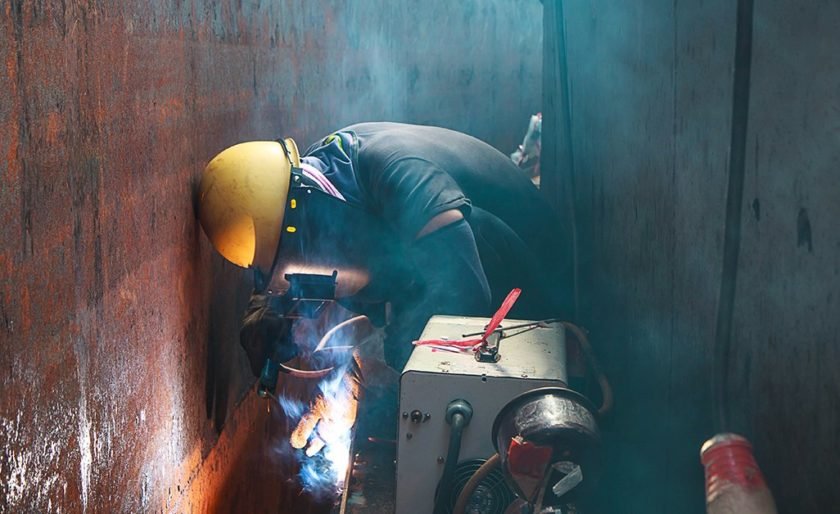



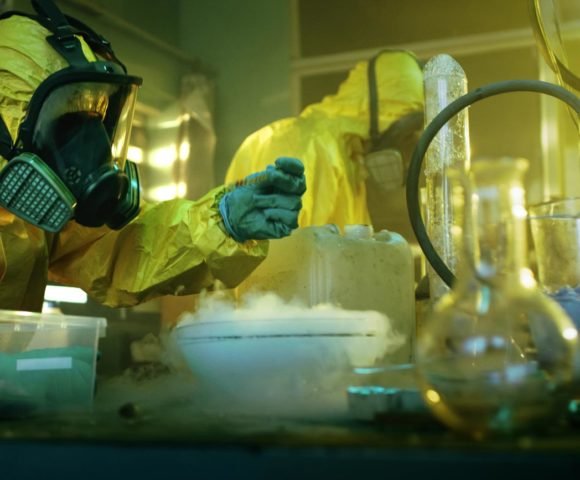


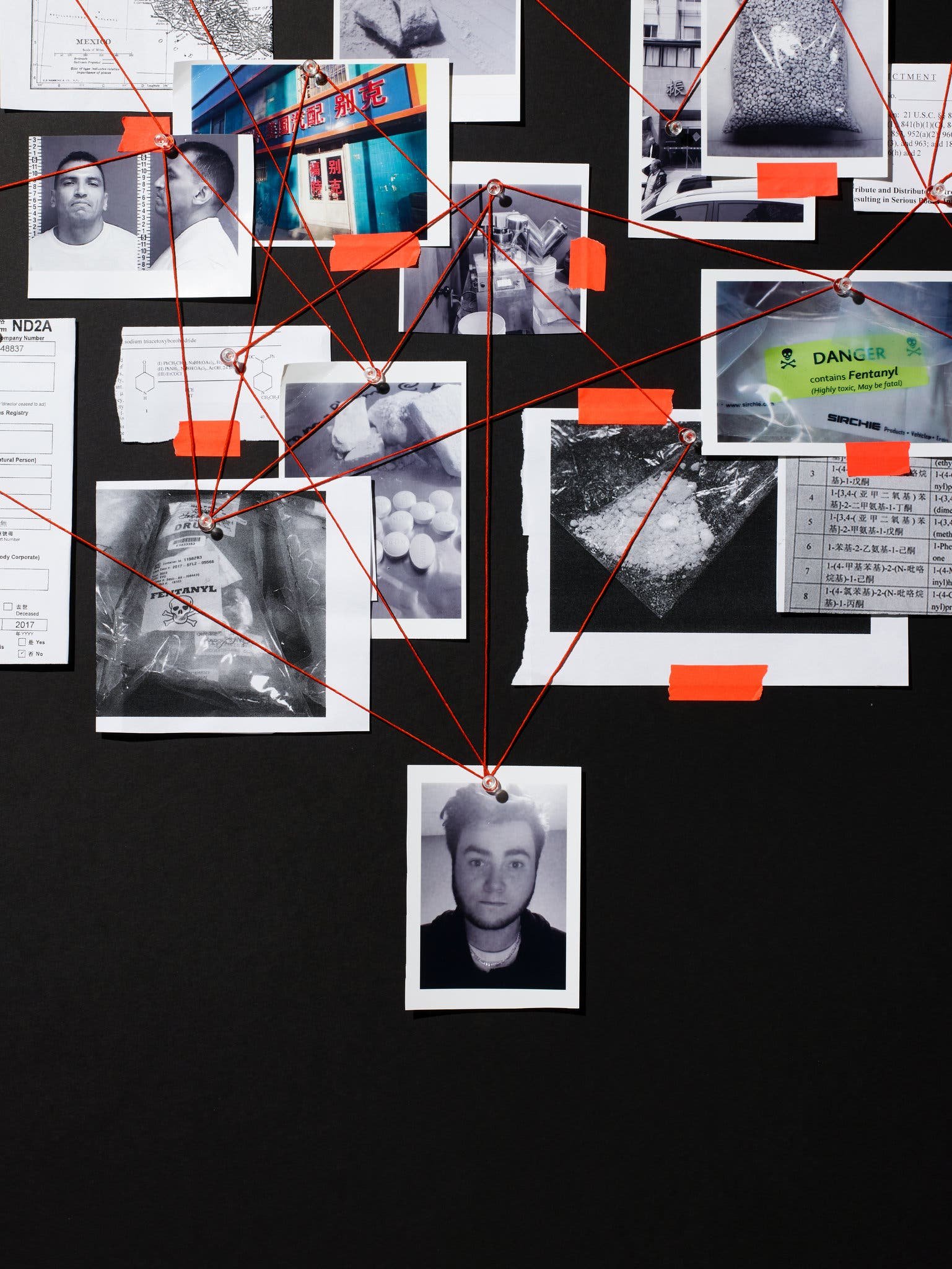






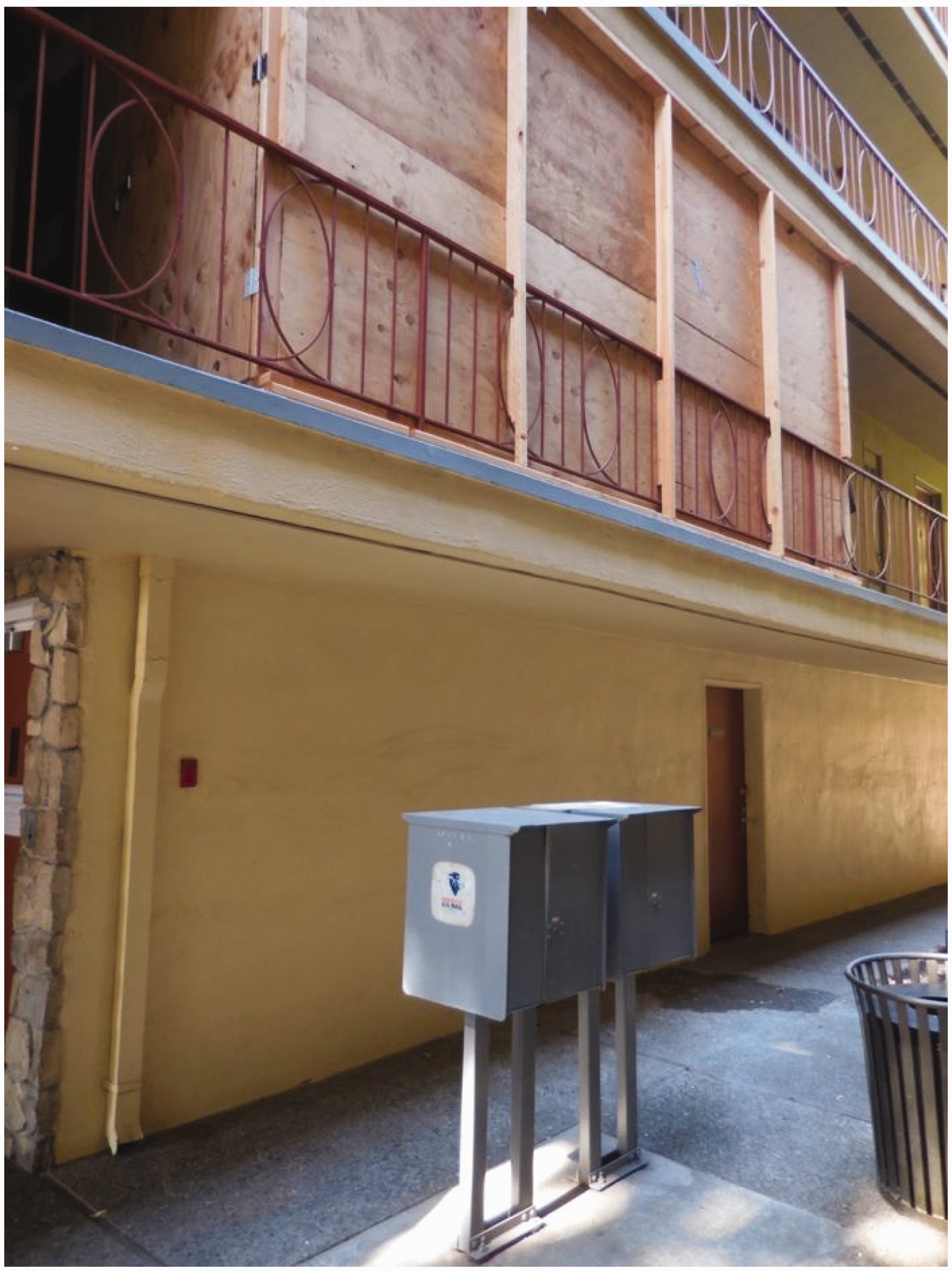
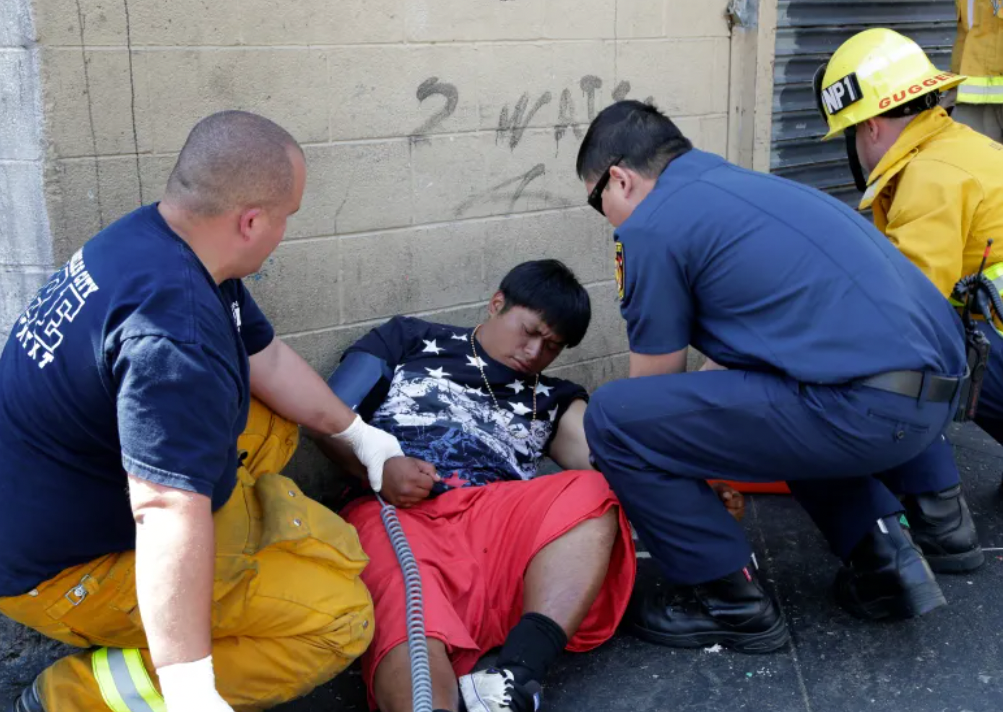



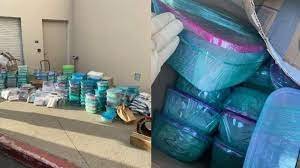
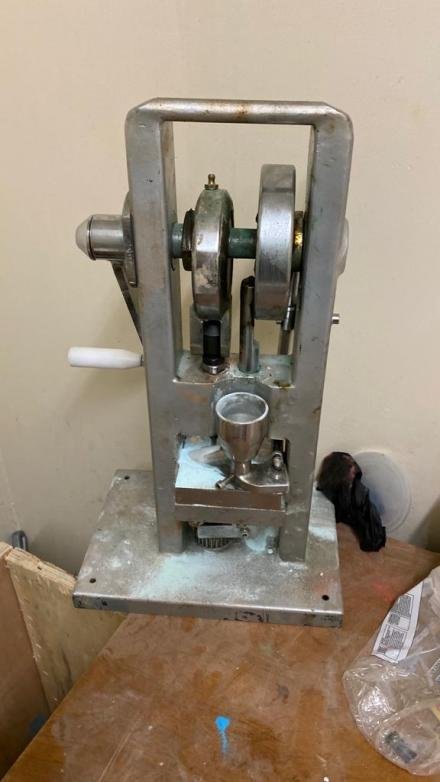

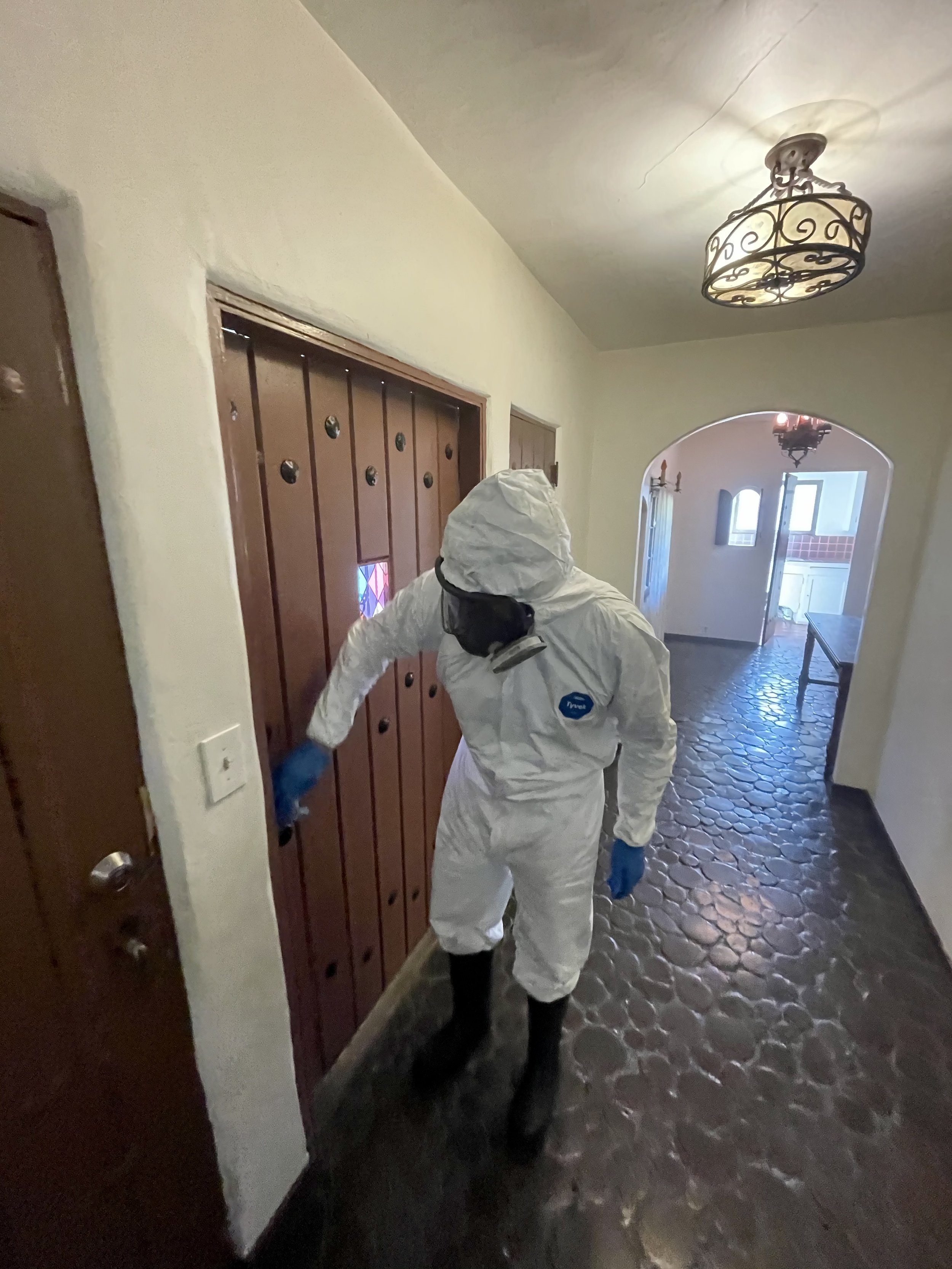






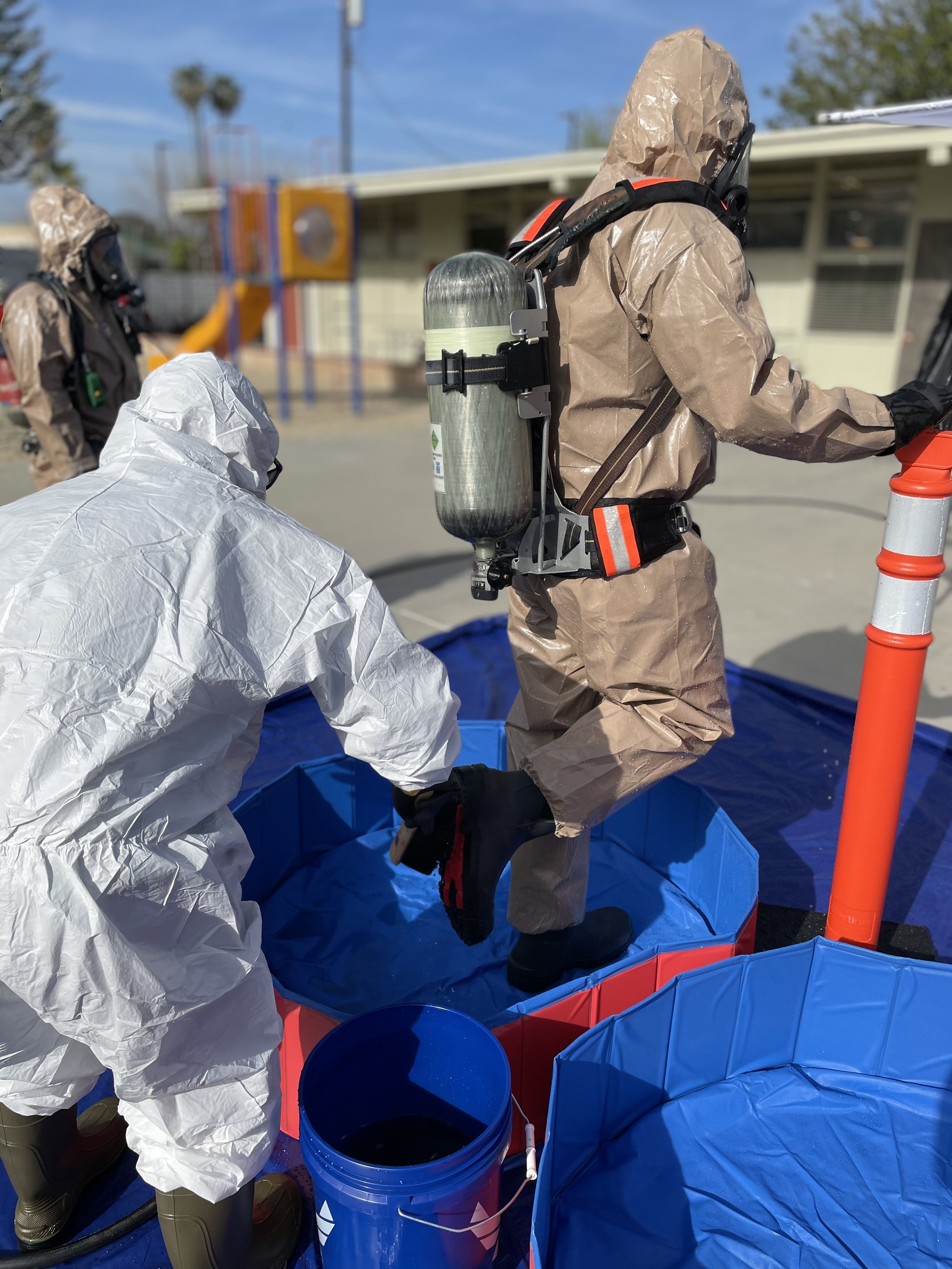

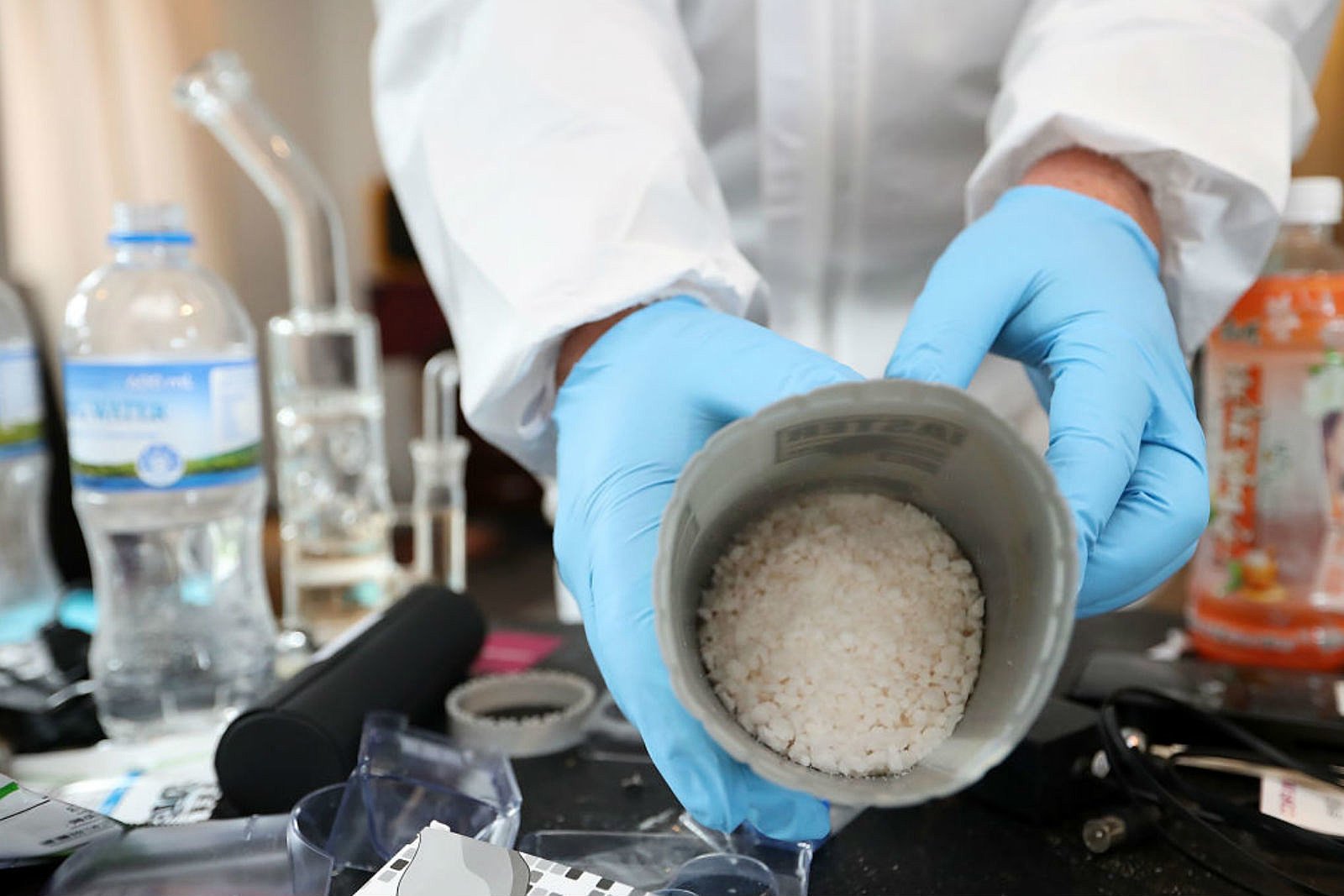









The 2025 Southern California wildfires left many buildings contaminated by toxic smoke, even those far from burn zones. Readers will learn about the dangers of wildfire smoke, which contains hazardous particles like heavy metals, asbestos, VOCs, and carcinogens, posing serious health risks and causing structural damage. The article explains how smoke affects health, damages property, and outlines the steps needed for professional remediation to restore safety.